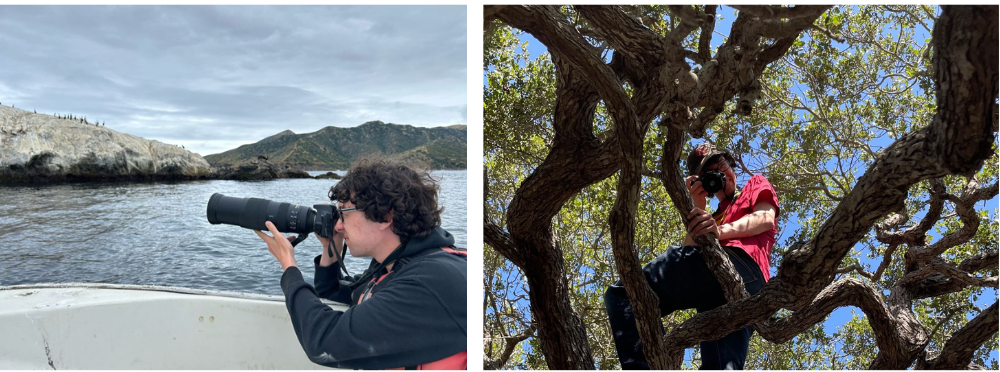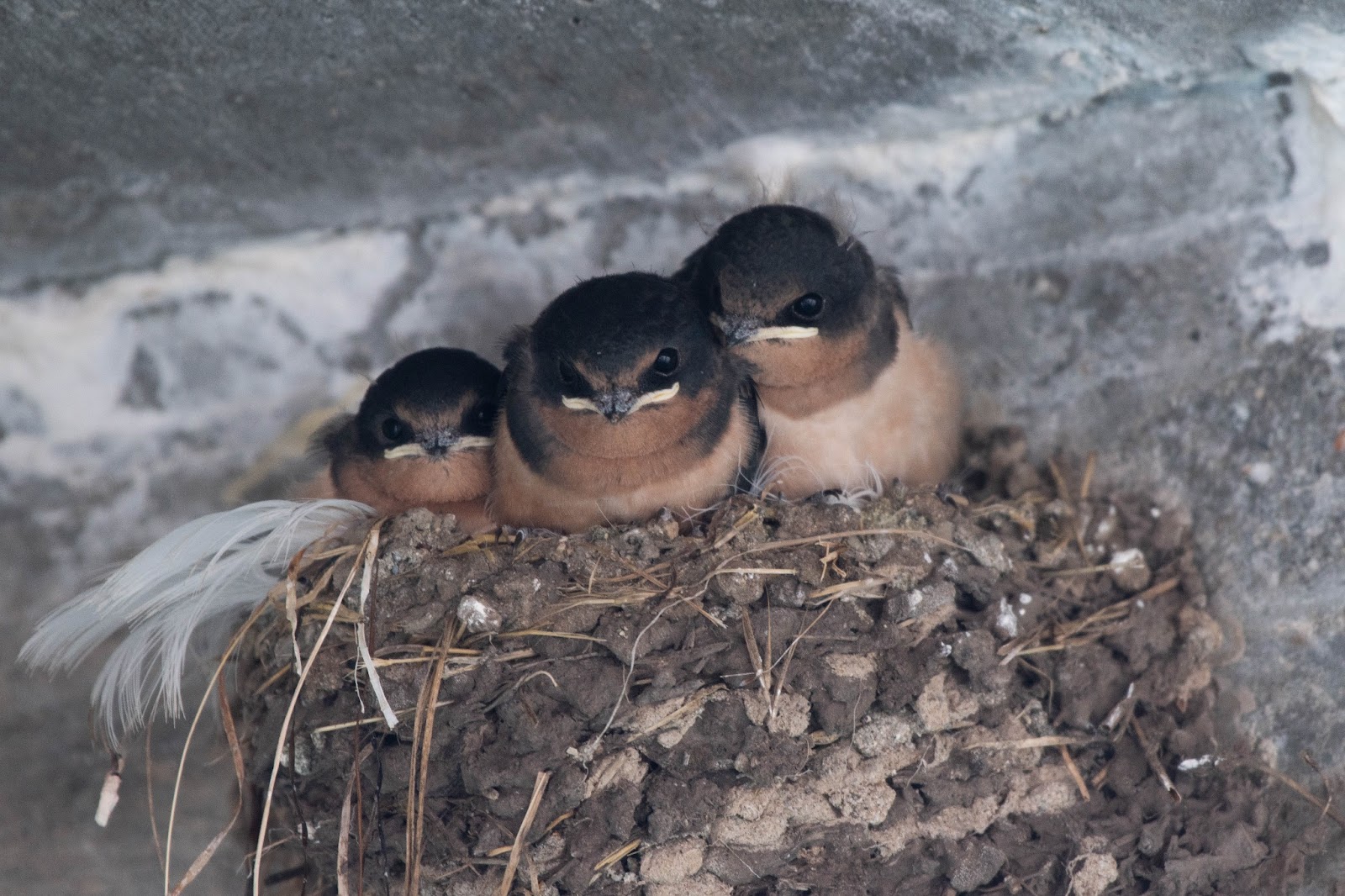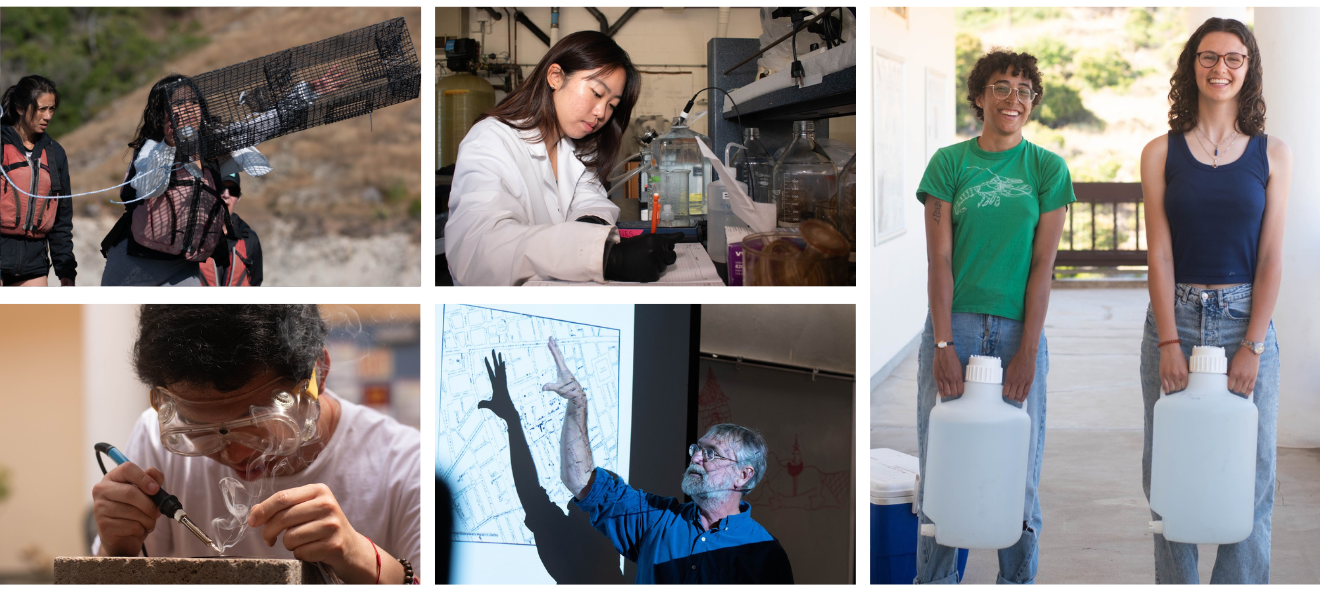Through the Lens: Capturing unique moments, people, and wildlife on Catalina Island

I look up towards the water’s surface as a dark cloud of fish swarms above my head. As tens of thousands of sardines, in a group called a bait ball, break up the sun rays and cast their shadows on the hundreds of barracuda and kelp bass that follow and hunt them, I wonder how I got myself into this position in the first place.

The daily free diving, diving solely with one’s lung capacity, with the Maymester class certainly helped as it allowed me to easily dive down around 20 feet to come directly under the large mass of fish again and again for over an hour. But I knew nothing about free diving and very little about marine wildlife or ecosystems just a few months prior. Never in a million years would I believe I would have the chance to spot a sea turtle in its habitat and observe the majestic and graceful force of one gliding through the water for 30 straight minutes. The sea turtle diving down to the sandy bottom of the ocean and among the bat rays in the cove while it continuously climbed its way to the surface to get another breath of air was astonishing to behold. But I believe the connections with the people and acquiring a mindset of preparedness might have mattered more to entering into these encounters in the first place.

One of the groups doing research on the island alerted me to the presence of the bait ball weaving around the cove, one of the waterfront staff, Trevor Oudin, alerted me to the presence of some baby barn swallows, the Director of the Hyperbaric Chamber, Karl Huggins, let me know about new Great Blue Heron fledglings, and I relied on the different students and researchers to coordinate daily activities and fieldwork plans.

Part of taking photos is moving in a way that isn’t taking up space or disrupting the moments before they materialize. Sometimes it is about allowing people to have the space for the moments to settle in, letting spaces sit for people’s genuineness in their interactions and reactions come naturally.

Each of the large groups (Maymester, SDDP, REU, Julymester) got to do a small boating training course that allowed us to take boats out to Bird Rock and spot Sea Lions resting, over to Two Harbors for a last minute Ice Cream Run, or out for a snorkel in the Marine Protected Area. On one such boating trip I was tasked with keeping two boats powered and adrift as some students were snorkeling in a designated no anchor zone. Not only did I keep both boats steady amid wakes from other boat traffic, but we also waved down boats in the area to keep them aware of our divers in the water. The attachment I felt towards these people I bonded with for the months at meals, classes, hikes, game nights, sample collections, dives, and leisure activities was immense because they were such a steady and integral part of my experience.

I spent a great deal of time this summer with a grin on my face. An amazing environment that offers breathtaking views, planned group activities, and an ecosystem that is protected all alongside a supportive cohort of students meant there was never a dull moment. Jessica Dutton, the Executive Director of the Wrigley Institute for Environment & Sustainability (W.I.E.S.), and Kathryn Royster, the Assistant Director for Public Communications for W.I.E.S., were my mentors during the Wrigley Environmental Communication Internship and helped foster some connections on the Island. And I also had a team behind me in Vanessa Codilla, who is in charge of Digital Content Coordination, and Nick Neumann, who helped with Digital Media Production.
Despite not being in a class I spent most of my time learning nonetheless from lessons about bacterium that call the ocean home, carbon sequestration, foraminifera organisms in seawater, research on moray eels and kelp, to lectures about energy and watershed management each day showed me a new fragment of the diverse and intricate studying of the natural world that is occurring day in and day out.

I got into the role because of my fascination with wildlife photography and the impact scientific communication can have using the #WrigleyWildlifeWednesday as a platform to show off the biodiversity. On top of all of that, I got to be a part of something bigger than myself, clued into many of the different stories about the wildlife on the island and changes residents of the island have seen over the past 5, 10, 20 years. I don’t know exactly where I will end up or what I will end up doing years down the road, but I hope I make as big of an impact on the world around me as USC Wrigley has made for me.
Watch Jason’s Video about encounters with Catalina Wildlife:
